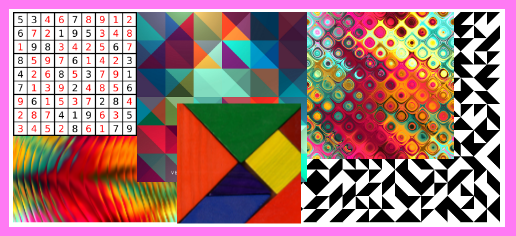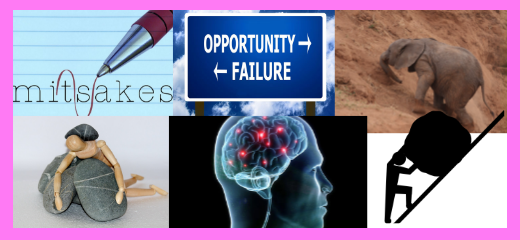


Opportunities to Learn (OTL) & Tracking:
- Students given opportunities to learn high-level content tend to achieve at higher levels
- Early tracking denies OTL to many students.
- Early tracking goes against research about child development and the plasticity of the brain.
- Ability grouping promotes fixed mindsets.
- Early tracking tends to lower achievement scores.
- Can make higher tracked students more brittle due to fixed mindsets and due to defending their gifted identifies
- Can demoralize lower tracked students
Growth Mindset Grouping:
- Grouping students heterogeneously and using strategies to leverage the strengths of heterogeneous groups. See below.
Teaching Heterogeneous Groups Effectively:
- Provide Open-Ended Tasks
- Assign problems with a low floor and high ceiling
- Challenge and support individual students at the right levels
- Offer a Choice of Tasks
- Offer students choice of different tasks that address different levels and fields of mathematics
- Examples:
- Choose between 2 tasks: 1) investigate shapes with area of 64 or (2) investigate shapes with volume of 216
- Examples:
- Offer students choice of different tasks that address different levels and fields of mathematics
- Individualized Pathways
- Example: Using SMILE cards to individualize instruction for London students
- Assign students 10 cards that they word on at their own pace before collecting 10 more
- To see the SMILE cards, go here.
- Offer individualized learning pathways and opportunities for group work and collaboration.
- Example: Using SMILE cards to individualize instruction for London students
Four Tenets of Complex Instruction (or How to Do Math Effectively in Teams):
- pedagogical approach designed to make group work equitable designed by Liz Cohen and Rachel Lotan
- Multidimensionality
- Emphasize more than one type of math processing including:
- asking good questions
- rephrasing problems
- explaining
- using logic
- justifying methods
- using manipulatives
- connecting ideas
- helping others
- Design group worthy tasks. These tasks:
- illustrate important math concepts
- allow for multiple representations
- encourage visuals
- encourage color-coding to represent same ideas in different visuals – for example make all visuals that represent the variable, x, blue
- draw effectively on collective resources of the group
- have several possible solution paths
- Examples –
- Given several pile patterns what would be the pile number for pile 10
- Challenge activity intentionally designed to have missing information
- Use linear functions (t-tables, drawings, equations, visuals, etc.) to derive the equation for the lengths of shoe laces that go with given shoe sizes
- Problems from the CPM Connections series
- Problems from the Interactive Mathematics Program
- Encourage students to tackle group worthy tasks using strategies such as:
- reading problems aloud
- ask themselves questions such as:
- what is the problem asking us?
- how could we rephrase the question?
- what are the key parts of the problem?
- Emphasize more than one type of math processing including:
- Roles
- Assign meaningful roles to students. Here are some examples:
- Organizer – keeps team focused on the task at hand
- Resourcer – only one that can leave the table to gather resources and to call over the teacher when the team is ready
- Understander – Asks questions that get all team members to understand and record all ideas that are presented
- Includer – Makes sure all team members are included in discussions
- Assign meaningful roles to students. Here are some examples:
- Assigning competence
- Raising the status of a student perceived to have low status in a group by praising their work, their thinking or their contributions to the team
- This can be especially helpful for students who are introverted and soft spoken
- Shared student responsibility
- Invest time in teaching students how to collaborate effectively
- develop and scaffold group norms for respect and listening
- example lesson – Ask students to make class lists of things They Like and Don’t Like to see / experience / hear when they are solving problems in groups. Use these lists to make class displays that encourage (discourage) good (bad) team behaviors
- be explicit about good math values and the purposes they serve
- examples of things to value:
- communicating thinking behind solutions
- creative representations of ideas
- examples of things to discourage:
- speeding through the solutions without explaining reasoning
- examples of things to value:
- calling on students at random within a team to explain their team’s ideas and other concepts
- if student doesn’t know the answer, emphasize to the team that it’s the team’s responsibility to make sure everyone understands the concept related to the question
- give team time to teach other
- return and ask the same student the same question
- Group tests – students would take test individually, one test selected at random to be the score for the entire team
- Set up problem solving norms that REQUIRE students to always justify their reasoning and answers
- Promote relationship equity
- less about having equal scores and more about showing respect for others
- What about high achievers? Will they be harmed by heterogenous grouping?
- many high achievers are fast problem solvers who need to develop the skill of slowing down and explaining the reasoning for the steps in their solutions
- discussing problems in groups can help these speedy problem solver solve problems at deeper levels through discourse
- develop and scaffold group norms for respect and listening
- Invest time in teaching students how to collaborate effectively

Homogeneous ability grouping can lead to fixed mindsets about one’s abilities in math. These fixed mindsets can harm students who are led to believe that they have high or low abilities in math. Students grouped as “high ability” may develop a fragile sense of self that leads to investing more energy to protect the gifted image of themselves rather than investing that energy in growth Students who are labeled as low ability may lose the sense of self-efficacy needed to persevere through challenging problems.
This article describes strategies for growth mindset grouping – i.e. grouping students heterogeneously and designing tasks and implementing strategies that encourage students to effectively collaborate while solving math problems together. See above for descriptions for these strategies.

Preparation Steps
- Research or design rich mathematical tasks that are group worthy. These tasks have low floors and high ceilings. They are multidimensional, have multiple solution pathways, can be represented in multiple ways and encourage discussion and group work.
- Develop and scaffold norms, values, and strategies that promote effective collaboration.
- Decide on what group roles you would like students to practice throughout the year.
- Decide on what strategies you will use to reward group accountability.
Early Implementation Steps
- Teach students HOW to collaborate effectively and HOW to live out effective mathematical values and strategies. See above for ideas.
- Use assigning competence strategy to redirect and model for groups how to value the opinions of students who aren’t getting a lot of air time.
- Use strategies that emphasized shared accountability – for example:
- assigning random people to speak on behalf of the team to the entire class,
- group tests (random person’s test is scored and that score is assigned to the whole team)
Advanced Implementation Steps
- Sequence collaboration strategies in phases in a order that is logical and emphasizes collaboration skills that tie well with content activities
- Gather feedback from students on norms and strategies in order to fine-tune them

- Mathematics articles
- Agency articles









